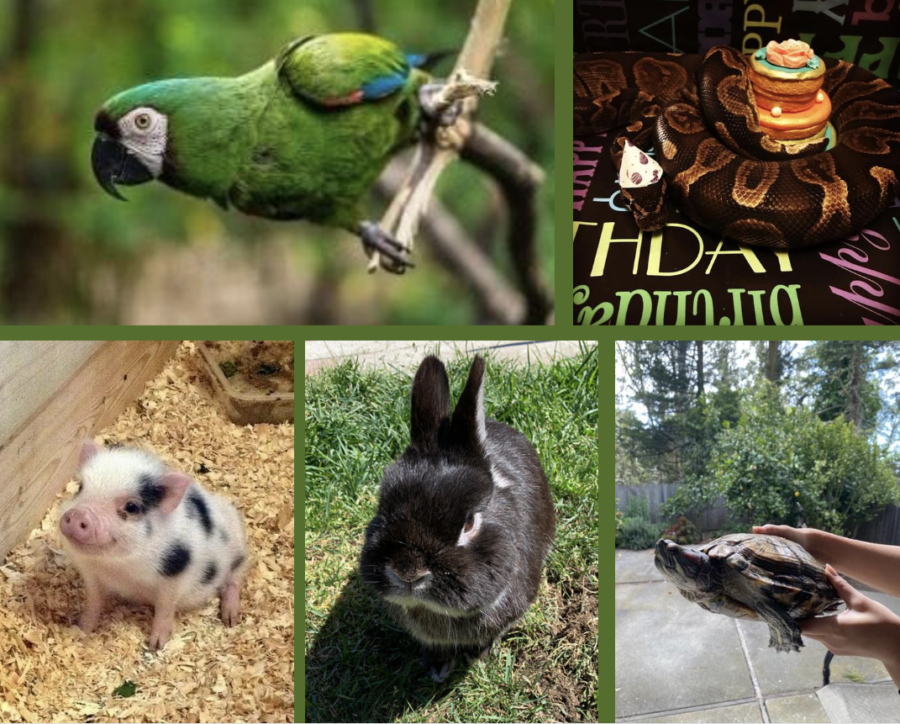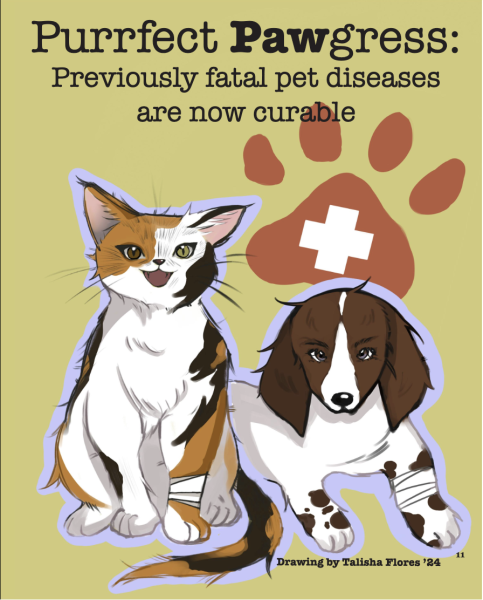Pet parents unleash affection for unique animal companions
Members of the Riordan community are pet parents to unique animals such as a parrot, snake, turtle, rabbit, and pig.
May 23, 2022
The appeal of having a fluffy, playful dog, an affectionate, stealthy cat, or a small, radiant fish to come home to is a widely shared feeling. Notably, because they have all proven to provide comfort to their owners.
If you have a pet, you may have felt this exact feeling. Their enticing presence relieves stress and “the social interaction between people and their dogs actually increases levels of the feel-good hormone oxytocin,” according to Johns Hopkins Medicine.
However, their effect on us is not always the only reason why we get pets. Their uniqueness, unusual looks, and individual personality makes some attracted to rather unusual types of pets.
The Pet Health Network noted, “Exotic pets are so different from cats and dogs that owning one can be an incredible learning experience.”
In fact, “13 percent of U.S households own a specialty or exotic pet” according to AVMA press releases.
Students and teachers at Riordan have experienced just this.
Nora Maguire ’24 got her miniature black and white bunny with pecan eyes when she was 10 years old. What captivated her was Buster’s cuteness and quietness. Other people noticed this as well.
“Whenever people see I have a bunny, they think it’s really cute and just want to hold it.”
Similarly, Kianna Hwang ’24 often gets the same reaction when people find out she has an olive, semi-aquatic red eared slider turtle, Crush. However, her pet’s cuteness was not what first intrigued Kianna.
In fact, she recalls, “My dad suggested getting a turtle as a joke, but then I seriously considered it as an option.”
It’s uniqueness and exclusiveness created an alluring reaction for her after visiting the pet store. However, after having her medium mustard bellied pet for six years, owning him has established a rare experience one would not get from an energetic and exuberant dog.
Likewise, Nora said, “I feel like he has made a really good impact on my life. But, you should only get one if you are prepared because they require a lot of cleaning up.”
On the other hand, Jimmy Reidy ’24 did not choose whether or not to get his black taloned aqua and forest green parrot, Sheamus. In fact, now he says he somewhat regrets this.
“I don’t encourage anyone to get it. It is the loudest and hardest pet to take care of.”
But, to make up for Sheamus’s loudness, he said, “It is special because the bird can talk and say bad words. Many visitors point this out who think it is funny.”
Subsequently, Science Instructor Colleen O’Rourke gets a unique reaction when people see her rainbow sheen, Ball–or Royal–Python snake, Heimdall.
“People think that all snakes bite and hiss, but in reality many are just really cute and silly.”
Oftentimes she recalls, “Many people think snakes are slimy, but they’re not, they’re very dry but their scales have a high-gloss shine.”
Nonetheless with a “good terrarium built with proper heating and humidity,” she said it is not difficult and highly recommends getting a Ball Python, especially with their calm and friendly behavior.
Lastly, Armando Castillo, Chair of the World Languages Department, happily got his three month old primrose pink pig, Mr. Piggy.
As his friends were planning to sell the litter of pigs, Castillo noticed Mr. Piggy’s social, friendly, and smart demeanor. He also noticed “How intelligent they are, and how they have feelings and emotions. He is not just some bean raised to become bacon and ham for us. He is very smart and affectionate and can solve things, he can even push open doors.”
All in all, one can see how scaled, furry, or feathered animals can teach people about humanity.













